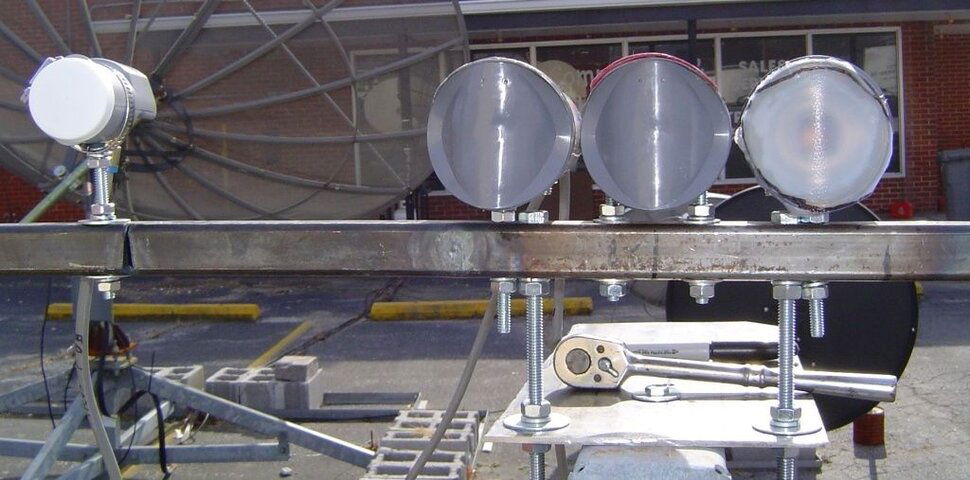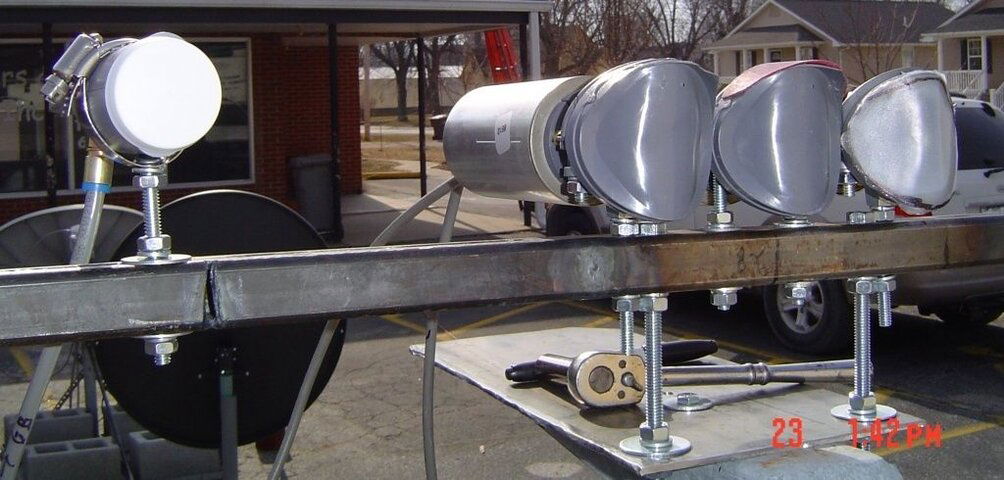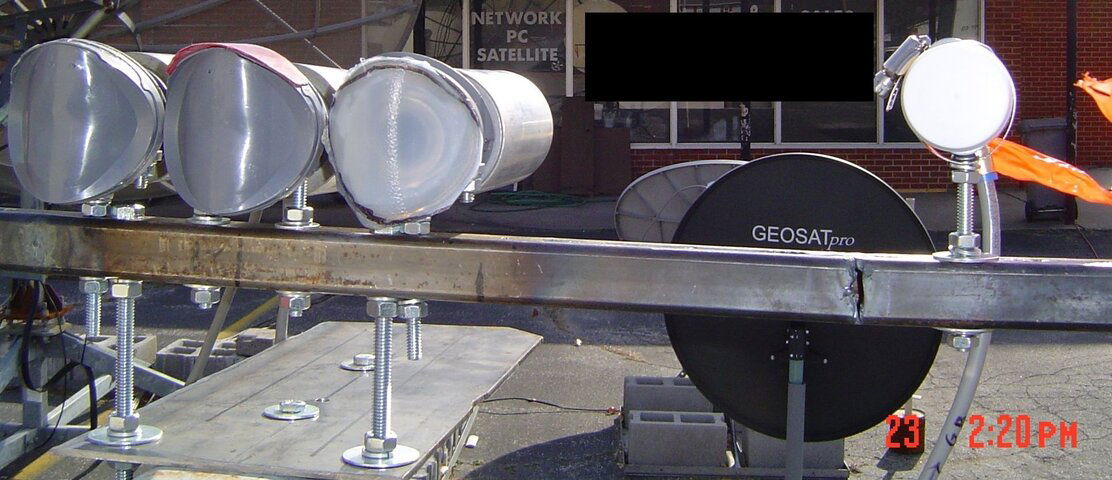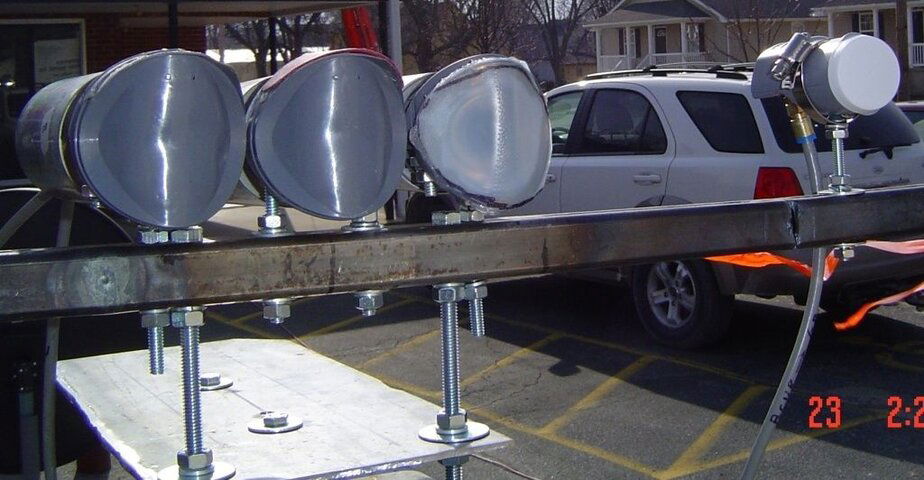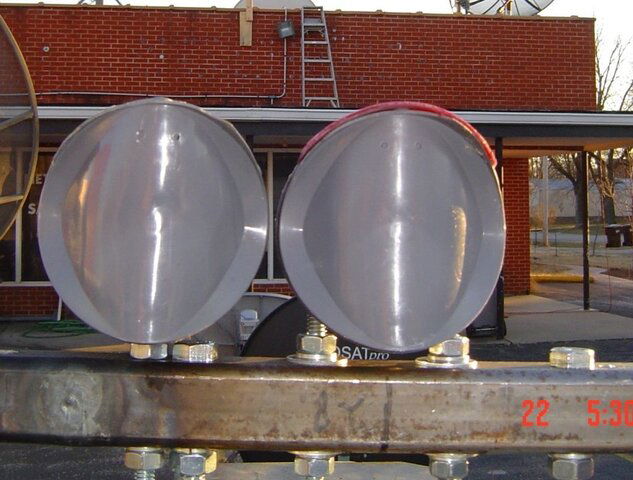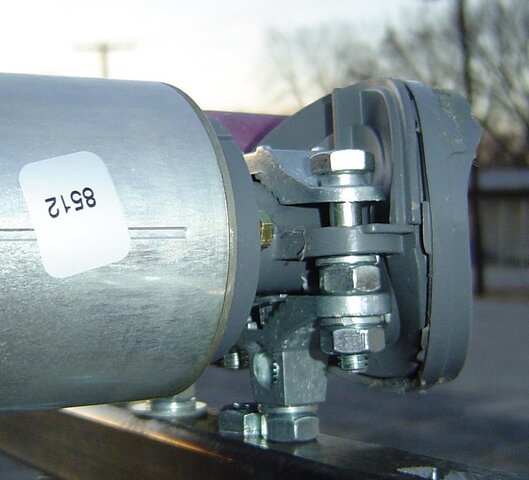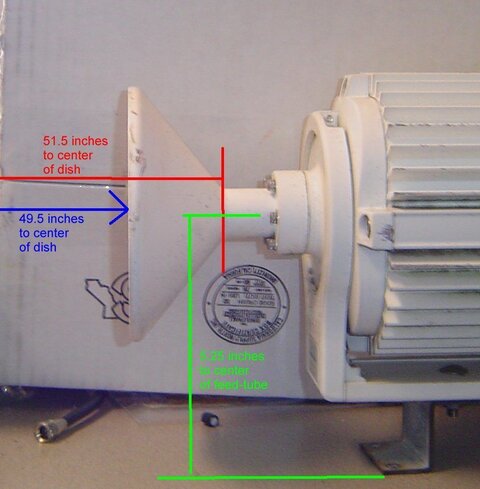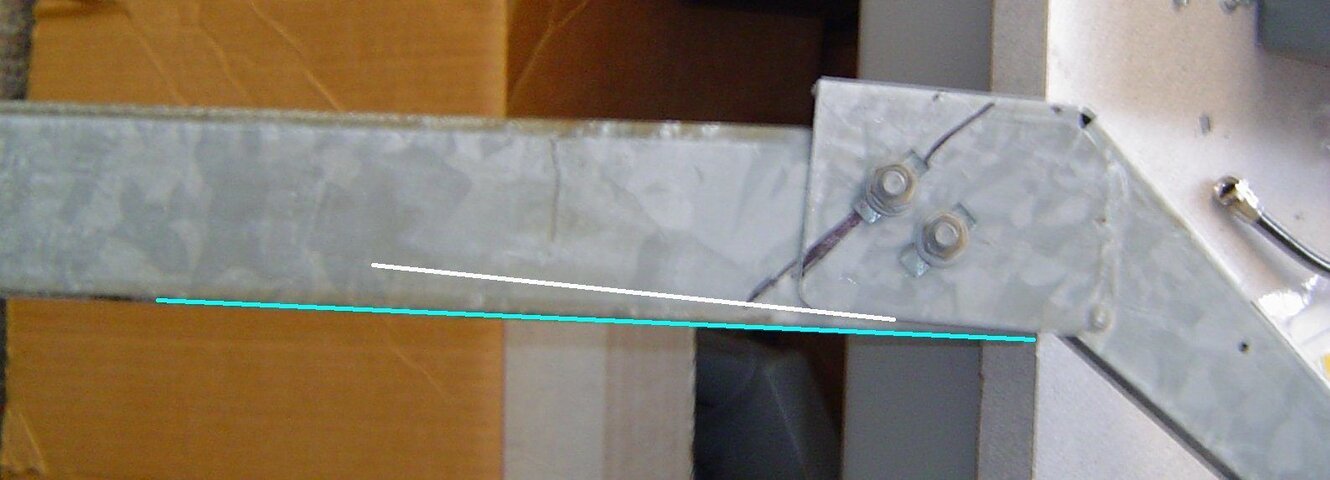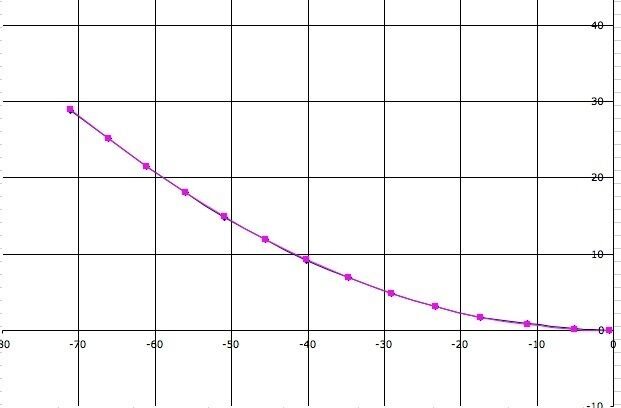Where to begin.
Started out by trying to set the polarity on the 89W lnbf, and discovered it was probably set correctly to start with. There was no covering on the horn when I got this lnbf off the dish it was on. I created the cover out of a milk carton.
After trying to switch polarities, still had no signal, so took horn back of and looked closely at the little plastic cover over the inner tube. It was pretty dirty and had a film on it. I cleaned it as best I could, and finally got some signal out of it, but only about half what I expected on 89W, so I think this LNBF may have a problem.
Slid the assembly away from the dish for testing focal length on the center three lnbfs. Got the length to 51 inches from the plastic cover on the 91W lnbf. I don't know exactly where you would measure the focal lentth because the horn is not round and the back part is about 51.5" focal length.
No change on 91W, still booming signals. No change on 93W. Macy's still at 75%, and spanish feed at 99% SQ. I checked the signal on my scanning dish for comparison SQ, my scanning dish gets those at 75% and 99% respectively, and my motorized Primestar 84e and FS IR-5400 gets them at 66% and 86% respectively, so I am pretty sure that is about as good as they are going to get.

I moved the assembly in to 49 inches on 91W, and no change on 91W. 89W, Macy's dropped to 60% SQ, but more on this later.
After moving the assembly back out to the 51 inches I had previously, I quick manufactured a holder for the bullet lnbf I have here as a spare. Stuck it in place for 101W, just to see if I could get anything. Just moved it around, back and forth, and up and down, and finally landed with signal. 3ABN was at 99% SQ, Apostolic Oneness was at about 60% SQ, but the old KUIL was at only 15% SQ.
I think with a little tweaking, and better holder, maybe a better arm with in/out to dish will make this distance out quite acceptable.
101W LNBF is 11 inches center to center from 91W and 52 inches from center of dish to front of LNBF. When I tried to move the LNBF further out, the signal got weaker. Couldn't get any further in, not enough movement in holder. The fact that it was only 11 inches from the center lnbf tells us the distance between lnbfs. Looks like an average of 1.9 inches per two degree spacing.
Moved the 101 lnbf to the 79W position, and began to look for signal. Finally found 11900 H and got it tuned in at about 45% SQ with a couple of feeds at about 15% SQ. Not quite enough for un-pixelateded watching.
The 79W lnbf is 11.5 inches from the center and 52.5 inches from the center of the dish to the front of the lnbf.
79W will require some work to make it acceptable. It is 12 degrees out from center and will need a better holder/adjustment and placement design.
I seem to get the best signal with all lnbfs pointed at the center, but have no way to tilt them which may be required.
I think Brian may be correct with his suggestion above of a rigid pipe of some kind that I can get bent easily.
I think it is also apparent that I may not be able to use the Primestar LNBFs even at the center.
My reasoning is that they are performing better at 51 inches because they are further apart, and at that focal distance being that far apart gives better signal.
I believe the real focal distance is going to be nearer the 48 inch length as the factory people told me it would be, and to get the best in the center and on the ends, I need to have smaller lnbfs at the center too. The center lnbfs are currently about 2-7/8 inches centers. From the distance out to 79 and 101, would indicate the distance for the centers to be more like 2-1/4 inch centers or closer.
I was in and out, mostly out for about 2 and half hours. The temp was in the mid 30's with 10-15 mph winds and gusts higher than that.
I couldn't take any more for the day, so I called it quits.
I won't have much good weather for at least another week. Will have to work on it when I can.
That will give me time to get a pipe, hopefully one I can bend myself. I have a hand pipe bender but will have to find out what size and strength it will bend.

I have some ideas for new brackets and holders, but want some ideas from you guys too. The brackets and holders need to be geared towards use with a pipe instead of a square tube.
As always, let me know what you think?

I appreciate any advice, comments, or ideas!
Here are today's pics:
